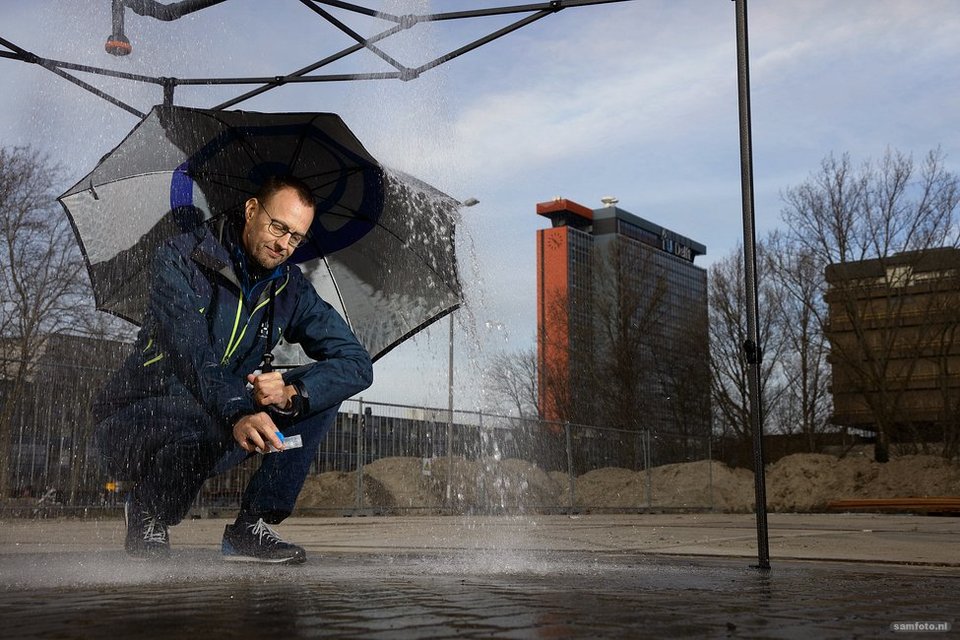Activate high contrast
To main content

Using DNA to scan ground water flows
By Tomas van Dijk. March 2019 Theme The City Cities are growing. What does this mean for housing construction, transport and livability? Researchers at Delft are investigating all kinds of subjects relating to urban problems, from modular houses, better sewer inspections, flying taxis, and how to reduce heat consumption. Medicinal waste, E. coli bacteria from a leaking sewer, oil and all sorts of chemicals pollute ground water in urban areas. Increasing global urbanisation is only exacerbating the problem. In order to chart pollution, we need to understand how water flows underground. After all, pollution spreads through these ground water flows. Dr Thom Bogaard from the Water Management Department (CEG) was recently awarded €250,000 to develop technology to make this possible. He fills microscopic grains of silicon oxide, artificial grains of sand, with synthetic DNA. ‘Imagine this DNA as a barcode. You can allow it to drain into the ground at various locations. If you encounter it in water samples taken from elsewhere in the city, this will give you information about the origin and speed of water flows’. Dr Thom Bogaard is experimenting in the Waterstraat on campus. (Photo: Sam Rentmeester) The potential of the technology has already been proved in controlled lab tests. Bogaard is now conducting experiments on the so-called Waterstraat, a plot of land next to the Green Village that is used as an open-air laboratory. The research is part of a larger research project called Urbanwat, in collaboration with the University of Barcelona and the University of Montpellier.

